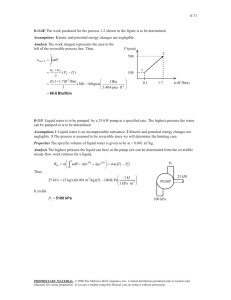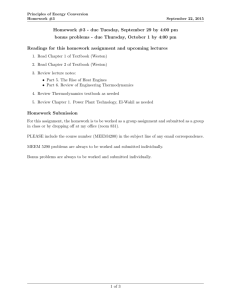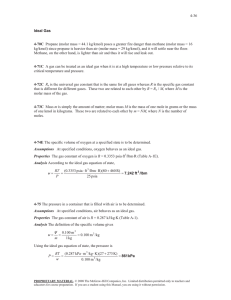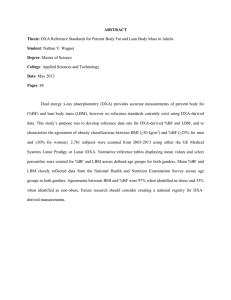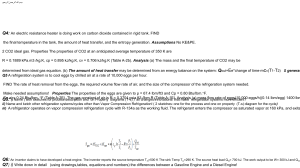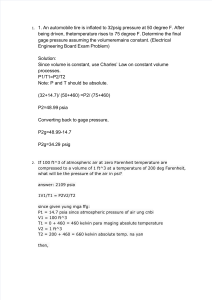the amount of air contained in the engine, and the... 9-80E
advertisement
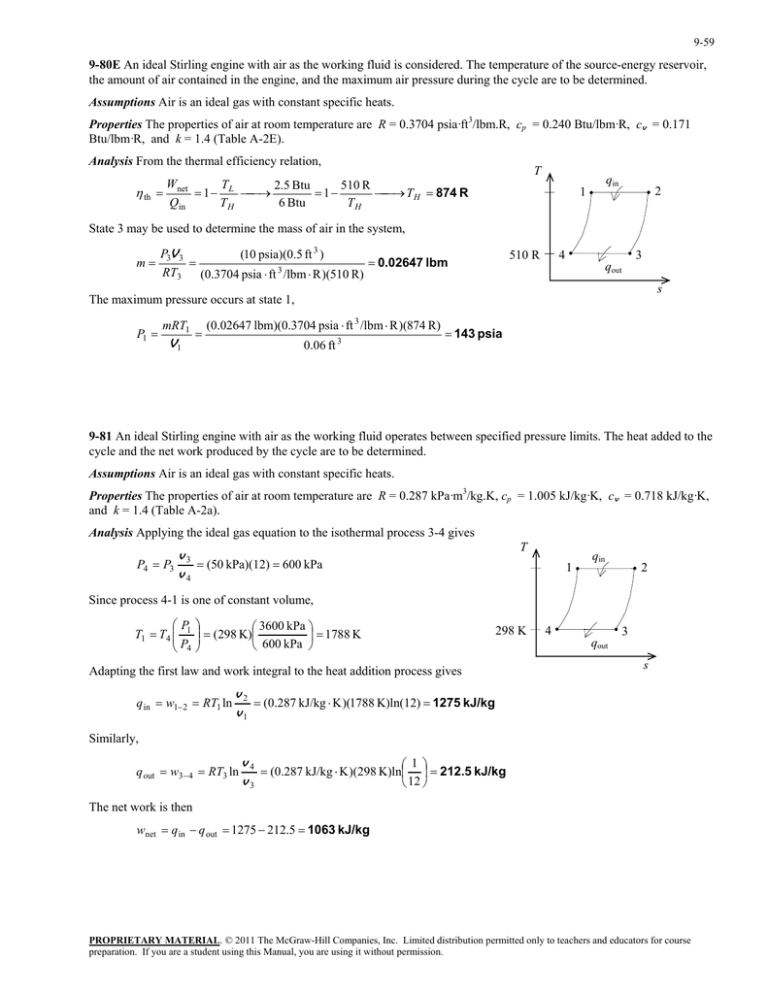
9-59 9-80E An ideal Stirling engine with air as the working fluid is considered. The temperature of the source-energy reservoir, the amount of air contained in the engine, and the maximum air pressure during the cycle are to be determined. Assumptions Air is an ideal gas with constant specific heats. Properties The properties of air at room temperature are R = 0.3704 psia·ft3/lbm.R, cp = 0.240 Btu/lbm·R, cv = 0.171 Btu/lbm·R, and k = 1.4 (Table A-2E). Analysis From the thermal efficiency relation, th T W T 2.5 Btu 510 R net 1 L 1 T H 874 R Qin TH 6 Btu TH qin 1 2 State 3 may be used to determine the mass of air in the system, m P3V 3 (10 psia)(0.5 ft 3 ) 0.02647 lbm RT3 (0.3704 psia ft 3 /lbm R )(510 R) 510 R 4 3 qout s The maximum pressure occurs at state 1, P1 mRT1 V1 (0.02647 lbm)(0.3704 psia ft 3 /lbm R )(874 R) 0.06 ft 3 143 psia 9-81 An ideal Stirling engine with air as the working fluid operates between specified pressure limits. The heat added to the cycle and the net work produced by the cycle are to be determined. Assumptions Air is an ideal gas with constant specific heats. Properties The properties of air at room temperature are R = 0.287 kPa·m3/kg.K, cp = 1.005 kJ/kg·K, cv = 0.718 kJ/kg·K, and k = 1.4 (Table A-2a). Analysis Applying the ideal gas equation to the isothermal process 3-4 gives T v P4 P3 3 (50 kPa)(12) 600 kPa v4 1 qin 2 Since process 4-1 is one of constant volume, P T1 T4 1 P4 3600 kPa (298 K) 1788 K 600 kPa 298 K Adapting the first law and work integral to the heat addition process gives q in w1 2 RT1 ln 4 3 qout s v2 (0.287 kJ/kg K )(1788 K)ln(12) 1275 kJ/kg v1 Similarly, q out w3 4 RT3 ln v4 1 (0.287 kJ/kg K )(298 K)ln 212.5 kJ/kg v3 12 The net work is then wnet q in q out 1275 212.5 1063 kJ/kg PROPRIETARY MATERIAL. © 2011 The McGraw-Hill Companies, Inc. Limited distribution permitted only to teachers and educators for course preparation. If you are a student using this Manual, you are using it without permission.
